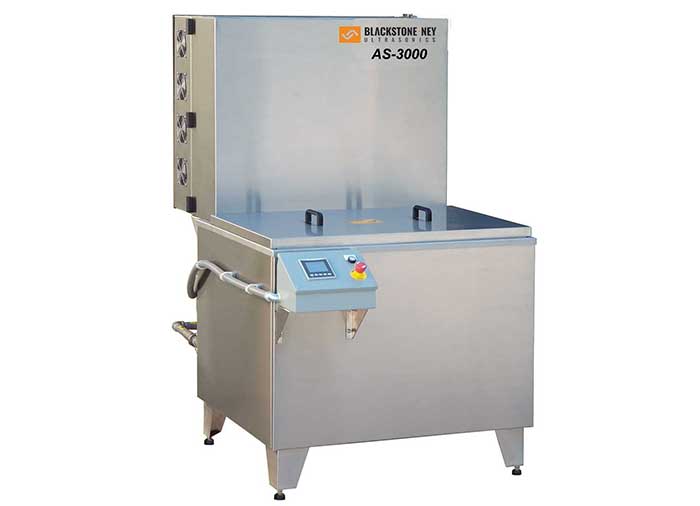I first talked about drying a long time ago in the blog called “Don’t Forget Drying.” In that blog, I stressed the importance of drying as a part of the cleaning process. In some cases, changes in the cleaning process can affect drying but, for now, let’s just concentrate on drying.
Drying simply means removing liquid remaining on the parts as a result of the cleaning and rinsing process. This is accomplished in one of two ways. One is physical removal. Physical removal of liquids may be as simple as placing the part in an orientation that will allow liquid to drain due to gravity. Or, it may involve using a blast of air or some other means such as centrifugal force or vibration to cause removal of liquid from the part being dried. The other (and probably more common) method of drying is evaporation. Evaporation of liquid is usually enhanced through the use of heat and the movement of air over the parts.

Agitation and Ultrasonics Combined For Highly Effective Cleaning
At first, drying by evaporation would seem very simple. The evaporation of liquids, after all, is nothing spectacular. It’s a process we see every day. It rains, the sidewalk gets wet. The rain stops and the sun comes out and the water on the sidewalk evaporates and is gone. Voila! A deeper look, however, reveals that there is more to evaporation than one might think. The rate of evaporation depends on temperature doesn’t it? The higher the temperature, the faster evaporation takes place? Well, actually, yes but in fact no! The rate of evaporation is actually driven by the relative humidity to a greater degree than by temperature. But, in fact, the two are inter-related. As the temperature of air is increased, it can absorb more liquid and, therefore, the relative humidity is decreased. Lower relative humidity promotes faster drying. The following chart and graph which both show essentially the same data are very interesting.


It is a common mis-belief that air can “hold” more water as the temperature is increased. In fact, air no more “holds” water than does a sponge. If a sponge is submerged in water and squeezed several times, the water displaces air from the cells of the sponge and, eventually, water occupies all of the internal spaces of the sponge. The sponge is “saturated” with water. When the sponge is removed from the water, a large percentage of the water will drain out as there is nothing really “holding” it in the sponge. Air at 100% humidity is saturated with water. If a volume of air saturated with water is heated, the level of saturation is decreased and the air requires additional moisture to again become saturated (or less unsaturated if you’re left-handed). Air that is saturated with water is at a relative humidity of 100%. Air that contains only 50% of the water required to be fully saturated is at a relative humidity of 50%. Similarly, if the temperature of a volume of air that is saturated is reduced, water comes out of the air as a fog or water droplets. The “dew point” is the temperature at which air becomes fully saturated. In weather terms, this is when it rains.
Relative humidity in percent is the total water required for a volume of air divided by the amount of water that would be required to be totally saturate that volume of air. In drying, it is important to understand the role of both temperature and humidity and how they are related. I will explore this more in the next blog.
– FJF –

 Water – De-ionized – Hints
Water – De-ionized – Hints  A Fond Farewell to John Fuchs
A Fond Farewell to John Fuchs  Millipore Testing – Evaluation by Particle Counting
Millipore Testing – Evaluation by Particle Counting  Tape Test for Cleaning Revisited
Tape Test for Cleaning Revisited